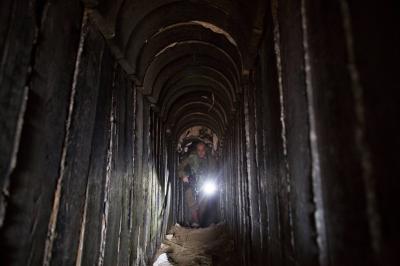Sources have indicated to the "Financial Times" that the tunnel network created by Hamas in the Gaza Strip is larger than the London Underground network and is fortified against Israeli drones. According to the sources, senior Hamas leaders and fighters have managed to take refuge inside the tunnels, many of whom survived the continuous Israeli attack for about eight weeks. It was confirmed that the tunnels, fortified against drones and various other Israeli capabilities, including airstrikes, are also believed to be where Hamas keeps its arsenal of rockets, along with over 130 hostages.
A former senior Israeli security official stated that the term "tunnels" does not do justice to what Hamas has built beneath the Gaza Strip, describing them as "cities underground." Another Israeli official emphasized that "the tunnels pose a colossal challenge... Hamas has placed explosive traps within these tunnels, along with obstacles preventing our movement, which increases the risks for our forces," asserting that "the government is pouring resources into finding a solution to destroy the tunnels."
The British newspaper noted that "the first step is to locate the tunnels." It is possible that ground-penetrating radar and acoustic sensors could work, although the dense urban environment of Gaza and the rubble left by Israeli airstrikes limit their effectiveness. A simpler tactic, known as "purple hair," involves tossing a smoke bomb into the tunnel entrance, then sealing it with expanding foam to see if the smoke appears elsewhere.
The security official considered that "such science fiction-like methods highlight the difficulties and the time required to dismantle Hamas's secret world. It also explains why some officials regret that Israel did not complete the task years ago," stressing that "we should have destroyed them all when the Hamas tunnel network was smaller and we had all the intelligence."




